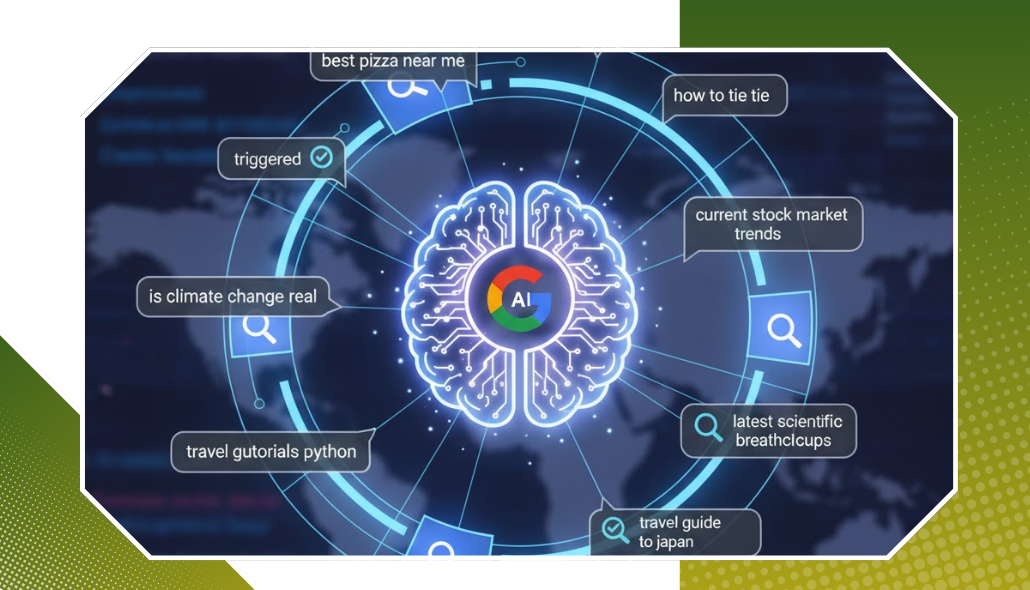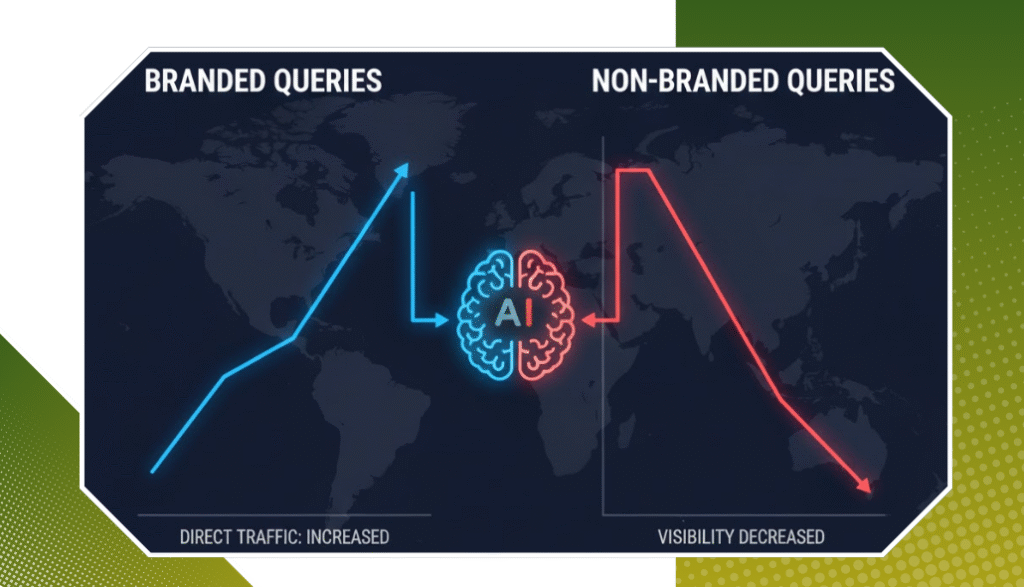For people who work in SEO (that’s “Search Engine Optimisation” – basically, helping websites get found on Google), this is a big deal. The question is: Should SEO pros use AI tools to try to understand how these AI Overviews work, and how they pick their answers?
The short answer is: Yes, it’s becoming super important! Using AI tools to “figure out” the logic behind AI Overviews is becoming a must-have skill for anyone serious about getting websites noticed in today’s online world.
What Are AI Overviews and How Do They Change SEO?
Sure, let’s go into what these are, what you see at the top of Google search results spots for AI Overviews. We have large-scale AI systems called Large Language Models (LLMs) to thank for that, which include Google’s Gemini. These LLMs are, in fact, very smart computers that can read, interpret, and also produce human-like text.
How do they work? When you ask Google a question, these LLMs read tons of information from many websites. Then, they put together a quick, easy-to-read summary directly on the search page. This is different from how Google used to work, where it mostly just showed you a list of website links.
What’s the big change for websites? Before, if your website was ranked #1 for a certain search, you’d get lots of clicks. But now, an AI Overview can appear above even the #1 spot. This means users might get their answer right away and not click on any website. This can affect how many people visit your site and how your content gets seen.
AI Overviews are changing how people experience search. They’re making it quicker, but also challenging websites to adapt.
“Figuring Out” AI Overviews: A Smart Way for SEO People
So, what does “reverse-engineering” AI Overview logic mean? It’s like trying to understand how a magic trick works. You see the result (the AI Overview), and you try to figure out the steps and secrets the AI used to create that result.
For SEO pros, this is a key strategy. It means:
- Analysing AI Answers: Looking closely at the answers AI Overviews give. What kind of words do they use? What information do they include? How do they put it all together?
- Prompt Testing: Trying out different ways of asking questions (different “prompts”) to see how the AI responds. This helps you understand what kinds of questions trigger AI Overviews and what information they pull.
This whole process is part of a new way of doing SEO called Generative Engine Optimisation (GEO). GEO is all about making your website content super friendly for these AI systems, so it’s more likely to be picked and shown in their answers. It’s about optimising for the new search engines – the generative ones.
Simple Ways to Use AI Tools to Understand AI Overviews
You don’t need to be a computer genius to start “reverse-engineering” AI Overviews. Here are some simple techniques using AI tools:
- Play with Prompts (Manual Testing):
- Go to Google Search.
- Type in different questions related to your website’s topic.
- See when an AI Overview appears.
- Change how you ask the question slightly. Does the AI Overview change? Does it mention different sources?
- This helps you see what types of questions AI answers well and what information it prioritises.
- Look at the Keywords AI Uses:
- When an AI gives an answer, pay attention to the words and phrases it uses. Are they very direct? Are they conversational?
- You can use AI tools like ChatGPT or Google Gemini yourself. Ask them a question and then ask them to summarise an answer. Compare their language to Google’s AI Overviews. This helps you understand what keyword patterns AI models like.
- Compare AI Sources to Google’s Top Results:
- When an AI Overview gives you an answer, it also shows links to the websites it used to create that answer.
- Check these “cited sources.” Are they the same websites that show up in the regular top 10 search results? Sometimes they are, sometimes they’re not! This tells you that AI might pick content based on different rules than traditional rankings.
- Use Special SEO Tools:
- As we talked about in the last blog, tools like Otterly.AI, Ahrefs, Semrush, SEOmonitor, SE Ranking, and ZipTie are adapting. Many of them now have features that specifically help you track when AI Overviews appear, what they say, and which websites they cite. These tools give you deeper insights without having to do all the manual searching yourself. They help you analyse AI output and compare it to your competitors.
By doing these things, you start to see patterns. You’re trying to find the “secret sauce” that makes AI choose certain content for its summaries.
Making Your Website’s Content AI-Friendly: Key Tips
Once you start to understand how AI Overviews pick content, you can make your own website’s articles better. Here are some key things to focus on:
- Be an E-E-A-T Master: This is Google’s way of saying “Be a trustworthy expert.” E-E-A-T stands for:
- Experience: Show you have real, first-hand knowledge. (e.g., “I personally tried five different coffee makers…”)
- Expertise: Show you know a lot about the topic. (e.g., “Written by a certified nutritionist…”)
- Authority: Show that others see you as a leader in your field. (e.g., “Cited by major news outlets…”)
- Trustworthiness: Make sure your content is accurate, honest, and your site is secure. (e.g., “All facts checked against scientific studies…”)
- AI models are trained to prioritise content from sources that clearly show high E-E-A-T. They want to give users reliable answers. So, make sure your content screams, “I know what I’m talking about, and you can trust me!”
- Structure Your Content for AI: AI loves content that’s easy to read and break apart.
- Use clear headings for each section.
- Use bullet points for steps or lists of items.
- Put the main answer to a question right at the beginning of the relevant section.
- Think about how your content flows logically. This helps AI models “interpret” your content correctly and pull out key facts.
- Match What People Really Want (User Intent): AI Overviews are all about giving direct answers to people’s questions. So, make sure your content actually answers the specific questions people are asking. Don’t just stuff keywords; understand why someone is searching and give them the best answer.
The Tricky Bits and The Future of SEO with AI
While in the use of AI tools for the purpose of understanding AI Overviews, which is great, at the same time, it is not always easy. We see that in:
- Unpredictable Sources: Sometimes, an AI Overview might pull information from a website that isn’t even in the top few regular search results. It’s hard to predict exactly which sources AI will choose, even if your content is seemingly perfect.
- Always Changing: These AI systems are constantly learning and changing. What works today might need a tweak tomorrow. So, SEO strategies need to be updated regularly. It’s like aiming at a moving target!
Conclusion
So, should SEO use AI tools to reverse-engineer AI Overview logic? Absolutely! It’s becoming a crucial part of how websites get seen and understood in the age of AI. It’s about being proactive and intelligent in your approach.
By using AI tools to study how AI Overviews work, and by making your content clear, trustworthy, and well-structured, you’re not just playing by new rules. You’re helping make the entire search experience better and more relevant for everyone. It’s about using technology wisely and ethically to improve how information is found online.
If you’re looking for expert help to navigate these exciting changes and make your content AI-friendly, contact us at Rankingeek Marketing Agency today for SEO services. We can help you understand the logic and get your content featured!





